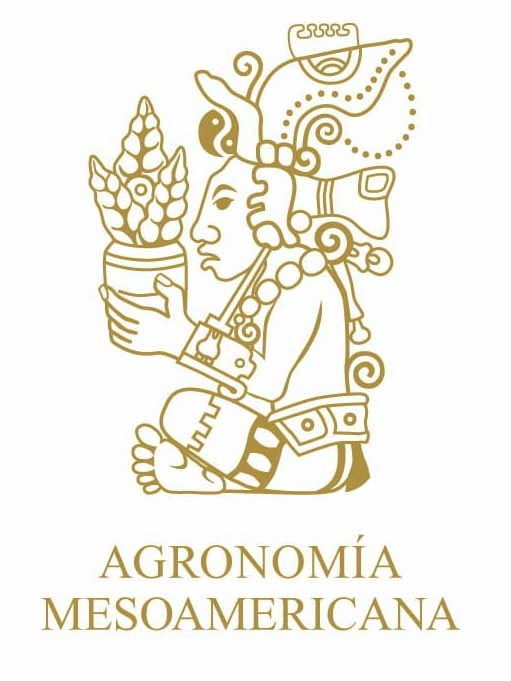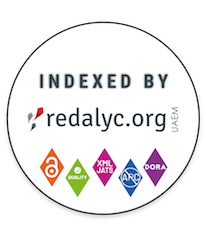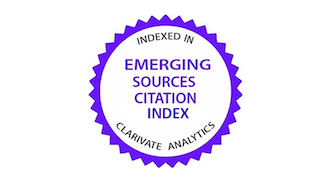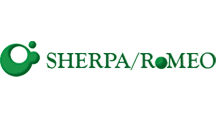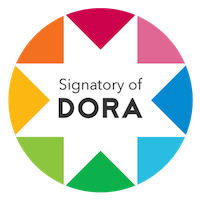Evaluation of ammonium nitrate and flaming for weed management in coffee
DOI:
https://doi.org/10.15517/am.2025.62524Keywords:
propane, foliar fertilizer, herbicides, weed management, Commelina diffusaAbstract
Introduction. The weeds compete for water, light, and space with the coffee. Therefore, sustainable management practices must be carried out. Objective. To evaluate the effectiveness of weed management with ammonium nitrate and flaming in a coffee system. Materials and methods. This work was carried out from September 26, 2022 to January 10, 2023 at La Hilda coffee farm in San Pedro de Poás, Alajuela, Costa Rica. Two alternative weed control treatments were applied jointly, the first was ammonium nitrate diluted in water, at three doses (0, 150 and 300 kg/ha) and 15 days after spraying (dda) with this fertilizer, flaming was applied at three doses (0, 60 and 120 kg/ha). Applications were made on weeds present in coffee rows following a split-plot design, the large plot was made up of the ammonium nitrate doses, while the small plots were applied with the flaming doses. A chemical control was included with the herbicide glyphosate, also applied with flaming. Each treatment was randomly assigned and replicated six times. Results. The broad leaves were moderately damaged at 25 days after application of nitrate and 10 days after flaming. Both doses of ammonium nitrate slightly damaged Commelina diffusa, and the highest dose of ammonium nitrate without flaming caused moderate damage to broadleaf weeds; flaming without ammonium nitrate provided moderate initial damage to narrowleaf weeds. Conclusions. The herbicidal effect of ammonium nitrate was dependent on flaming but only on broadleaf weeds, C. diffusa was successfully controlled with glyphosate and flaming.
Downloads
References
Agamalian, H. S. (1988). Weed control in crucifer crops with nitrogen fertilizers. California Agriculture, 42(6), 16-17. https://doi.org/10.3733/ca.v042n06p16
Altieri, M. A. (2016). Los quelites. Leguminosas y plantas silvestres en la alimentación y la agricultura. Leisa Revista de Agroecología, 32(2), 28-29. https://www.leisa-al.org/web/images/stories/revistapdf/vol32n2.pdf https://www.academia.edu/download/47894069/vol32n2.pdf#page=28
Anchía Jiménez, G., Chaverri Vásquez, S., Cordero Solís, J. J., & Mora López, I. (2021). Intoxicaciones agudas con pesticidas para fines suicidas en Costa Rica durante la década de 2010-2020. Medicina Legal de Costa Rica, 38(1), 131-145. https://www.scielo.sa.cr/scielo.php?pid=S1409-00152021000100131&script=sci_arttext
Arcila, J., Farfán, F., Moreno, A., Salazar, L., & Hincapié, E. (2015). Sistemas de producción de café en Colombia. En H. F. Ospina, & S. M. Marín (Eds.), Las arvenses y su manejo en los cafetales (pp. 102-130). Centro Nacional de Investigaciones de Café.
Ascard, J. (1995). Thermal weed control by flaming: biological and technical aspects [Doctoral dissertation, Swedish University of Agricultural Sciences]. http://pub.epsilon.slu.se/3853/1/ascard_j_091026.pdf
Astatkie, T., Rifai, M. N., Havard, P., Adsett, J., Lacko Bartosova, M., & Otepka, P. (2007). Effectiveness of hot water, infrared and open flame thermal units for controlling weeds. Biological Agriculture & Horticulture, 25(1), 1-12. https://doi.org/10.1080/01448765.2007.10823205
Bitterlich, I., Upadhyaya, M., & Shibairo, S. (1996). Weed control in cole crops and onion (Allium cepa) using ammonium nitrate. Weed Science, 44(4), 952-958. https://doi.org/10.1017/S0043174500094984
Centro de Investigaciones Agronómicas (2021). Suelos CR (1.1.0) [Aplicación móvil]. App Store. https://apps.apple.com/cr/app/suelos-cr/id1550353003
Datta, A., & Knežević, S. (2013). Flaming as an alternative weed control method for conventional and organic agronomic crop production systems: a review. Advances in Agronomy, 118, 399-428. https://doi.org/10.1016/B978-0-12-405942-9.00006-2
Descamps, P. (2017). Técnicas para la producción sostenible de café frente al cambio climático (No. F08/10929). Instituto Nacional de Innovación y Transferencia en Tecnología Agropecuaria. https://www.platicar.go.cr/images/buscador/documents/pdf/04/Tecnicas_para_la_produccion_sostenible_de_cafe_frente_al_cambio_climatico-min.pdf
Henríquez C., & Cabalceta G. (1999). Guía práctica para el estudio introductorio de los suelos con un enfoque Agrícola. Asociación Costarricense de la Ciencia del Suelo.
Herrera-Murillo, F., & Picado-Arroyo, G. (2023). Evaluación de herbicidas preemergentes para el control de arvenses en camote. Agronomía costarricense, 47(1), 59-71. http://dx.doi.org/10.15517/rac.v47i1.53949
Huerta, J. D. J., Oropeza Mota, J. L., Guevara Gutiérrez, R. D., Ríos Berber, J. D., Martínez Menes, M. R., Barreto García, O. A., & Mancilla Villa, O. R. (2018). Efecto de la cobertura vegetal de cuatro cultivos sobre la erosión del suelo. Idesia (Arica), 36(2), 153-162. http://dx.doi.org/10.4067/S0718-34292018005000701
Instituto Regional de Estudios de Sustancias Tóxicas. (2020, nov 24iembre). Manual de Plaguicidas de Centroamérica. Universidad Nacional Heredia, Costa Rica. https://www.iret.una.ac.cr/index.php/es /http://www.plaguicidasdecentroamerica.una.ac.cr/
Isaac, W. A., Gao, Z., & Li, M. (2013). Managing Commelina species: Prospects and limitations. In A. J. Price, & J. A. Kelton (Eds). Herbicides - Current Research and Case Studies in Use (pp.543-562) IntechOpen. https://doi.org/10.5772/55842
Jhala, A. J., Knezevic, S. Z., Ganie, Z. A., & Singh, M. (2014). Integrated weed management in maize. In B. S. Chauhan, & G. Mahajan (Eds.), Recent Advances in Weed Management, (pp.177-196). Springer. https://doi.org/10.1007/978-1-4939-1019-9_8
Johnson, W. C., & Luo, X. (2018). Cool-season weed control using ammonium nonanoate and cultivation in organic Vidalia® sweet onion production. Weed Technology, 32(1), 90-94. https://doi.org/10.1017/wet.2017.91
Kittredge, J. (2015, Aug.14). Restauración del Carbono en el Suelo: ¿Puede la Biología hacer el trabajo? Recuperado Septiembre 5, 2024, de https://centrodenegociosganaderos.com/wp-content/uploads/2024/06/Restauracion_del_Carbono_en_el_Suelo.pdf
Knezevic, S. Z., Stepanovic, S., & Datta, A. (2014). Growth stage affects response of selected weed species to flaming. Weed Technology, 28(1), 233-242. https://doi.org/10.1614/WT-D-13-00054.1
Luna Ortega, J. G., & Antuna Grijalva, O. (2016). Uso eficiente y recuperación aparente de nitrógeno en maíz forrajero en suelos diferentes. Revista mexicana de ciencias agrícolas, 7(2), 301-309. https://www.scielo.org.mx/scielo.php?script=sci_arttext&pid=S2007-09342016000200301
Muñoz, F. R. (2021, feb). El herbicida glifosato y sus alternativas (1st ed). Serie de informes técnicos IRET, https://conahcyt.mx/cibiogem/images/cibiogem/Documentos-recopilatorios-relevantes/El_herbicida_glifosato_y_sus_alternativas_UNA.pdf
Organic & Chemical Free Weed Control. (2024, Sept 10). Weed Dragon® Torch Kits. https://flameengineering.com/collections/weeddragon
Rifai, M. N., Astatkie, T., Lacko-Bartosova, M., & Gadus, J. (2002). Effect of two different thermal units and three types of mulch on weeds in apple orchards. Journal of Environmental Engineering and Science, 1(5), 331-338. https://doi.org/10.1139/s02-027
Rosskopf, E. N. (2018). Bioherbicides: An overview. In R. Zimdahl, (Ed.) Fundamentals of weed science (5th ed.). Elsevier. http://dx.doi.org/10.19103/AS.2017.0025.20
Sierra, C. (1992, Julio). Características fisicoquímicas de algunos fertilizantes. Boletín Técnico-Instituto de Investigaciones Agropecuarias. Recuperado Marzo 20, 2022, de https://biblioteca.inia.cl/handle/20.500.14001/39239
Viguera, B., Martínez, M., Donatti, C., Harvey, C., Alpízar, F., & Cascada, P. (2017). Impactos del cambio climático en la agricultura de Centroamérica, estrategias de mitigación y adaptación. Centro Agronómico Tropical de Investigación y enseñanza. https://repositorio.catie.ac.cr/handle/11554/9476
Villalobos, A., & Herrera Murillo, F. (1999). Control químico de Polygonum aviculare y otras malezas en el cultivo de la zanahoria (Daucus carota). Revista de Agricultura Tropical 32, 07-16.
Zhang, L., Rana, I., Shaffer, R. M., Taioli, E., & Sheppard, L. (2019). Exposure to glyphosate-based herbicides and risk for non-Hodgkin lymphoma: A meta-analysis and supporting evidence. Mutation Research - Reviews in Mutation Research, 781, 186–206. https//doi: 10.1016/j.mrrev.2019.02.001https://doi.org/10.1016/j.mrrev.2019.02.001. 73
Downloads
Published
How to Cite
Issue
Section
License
Copyright (c) 2025 Mary Pamela Portuguez García, María Isabel González-Lutz, Renán Agüero Alvarado, Adolfo Soto Aguilar

This work is licensed under a Creative Commons Attribution-NonCommercial-NoDerivatives 4.0 International License.
1. Proposed policy for open access journals
Authors who publish in this journal accept the following conditions:
a. Authors retain the copyright and assign to the journal the right to the first publication, with the work registered under the attribution, non-commercial and no-derivative license from Creative Commons, which allows third parties to use what has been published as long as they mention the authorship of the work and upon first publication in this journal, the work may not be used for commercial purposes and the publications may not be used to remix, transform or create another work.
b. Authors may enter into additional independent contractual arrangements for the non-exclusive distribution of the version of the article published in this journal (e.g., including it in an institutional repository or publishing it in a book) provided that they clearly indicate that the work was first published in this journal.
c. Authors are permitted and encouraged to publish their work on the Internet (e.g. on institutional or personal pages) before and during the review and publication process, as it may lead to productive exchanges and faster and wider dissemination of published work (see The Effect of Open Access).
